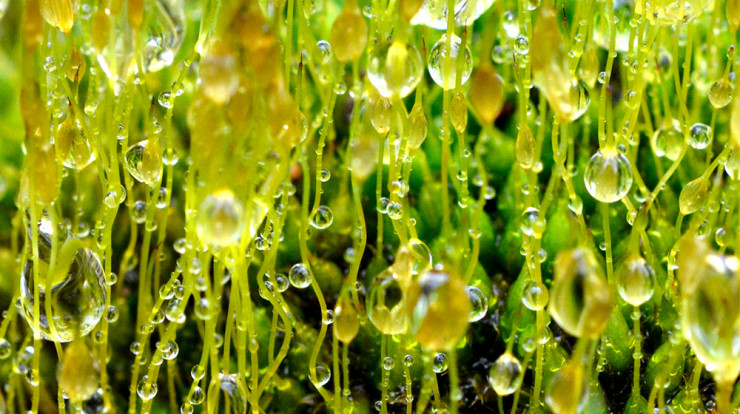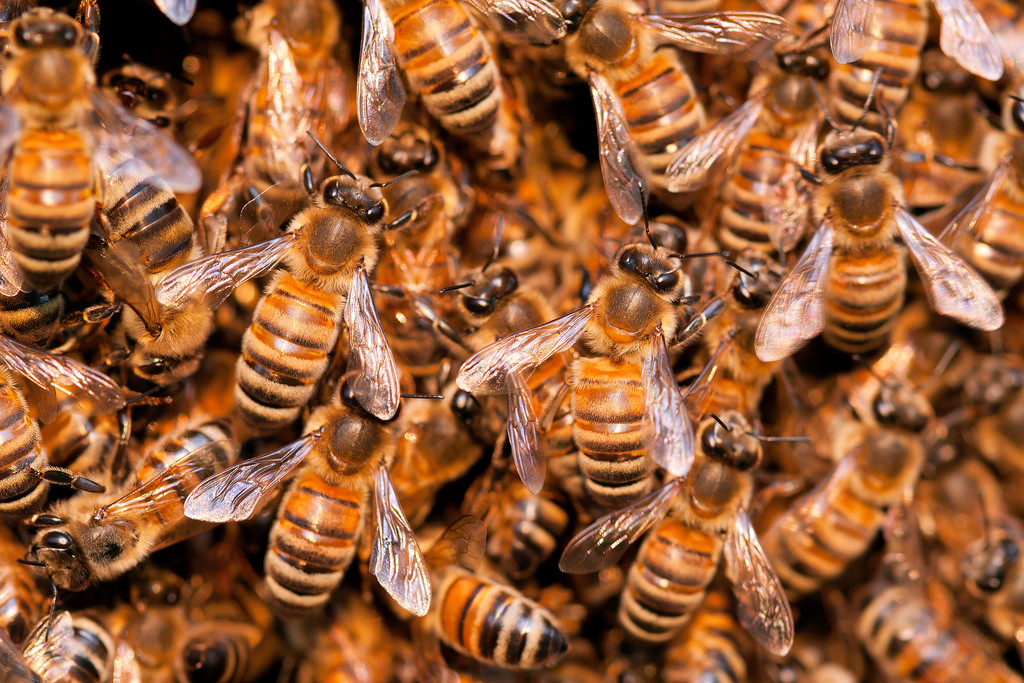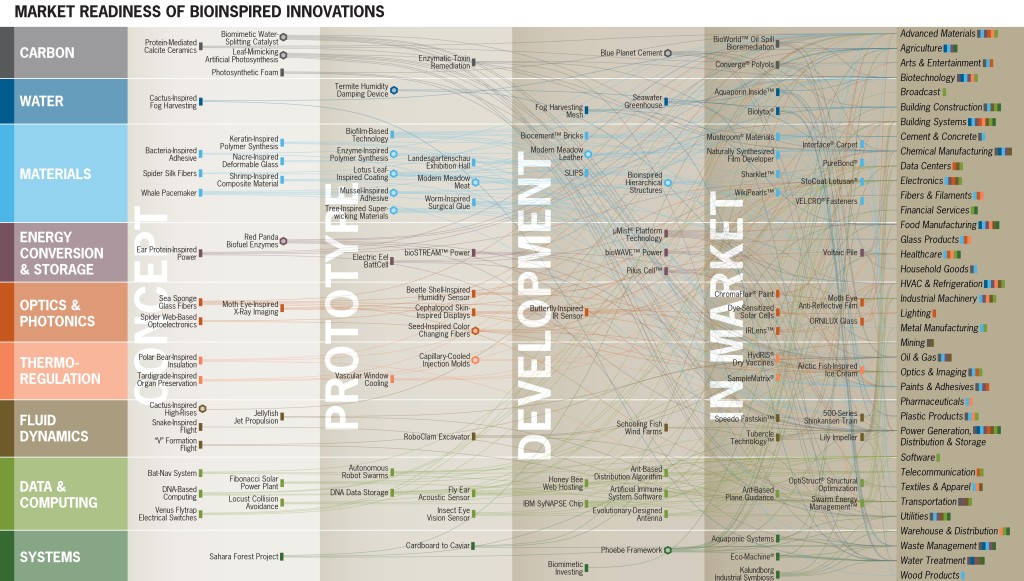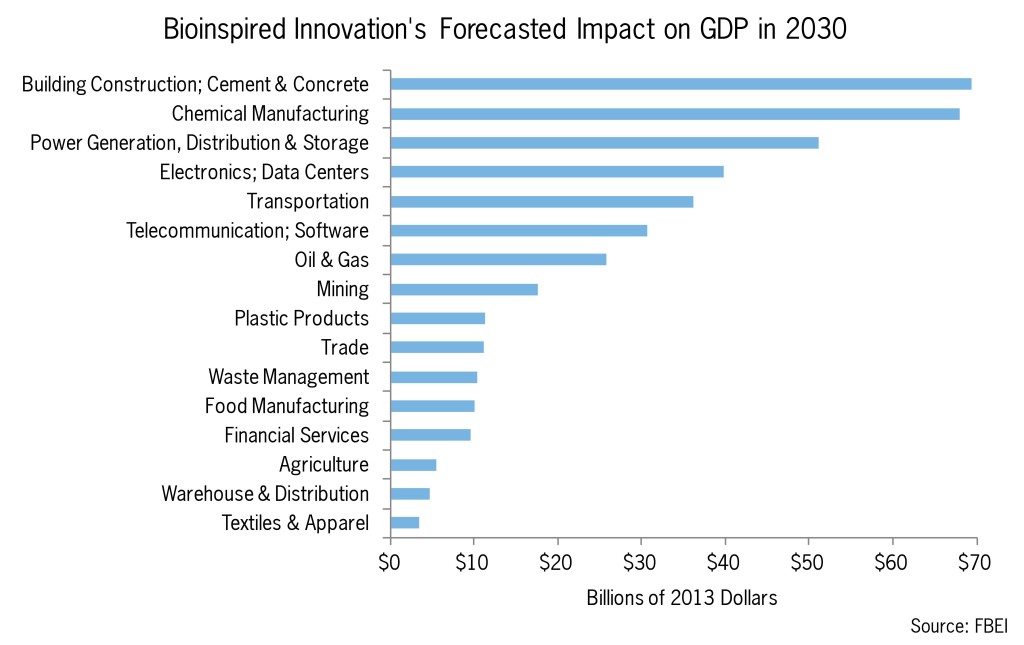

Contributions
Nature and Business: Developing a Sustainable Society Together
Allison Bernett
Share
Learn more about our bioinspired innovation work and services by emailing us at [email protected] and reading our report, Tapping into Nature. Follow the conversation on twitter: @TerrapinBG | #TapNature.
This post was originally published on the Biomimicry Institute’s Asking Nature blog. See the original post here.
Co-authors: Allison Bernett and Cas Smith.
Biomimicry offers a strategic advantage in sustainable product design, research, and development. Organizations that study nature as a source of innovation have already transformed a wide array of industries. Leveraging biomimicry’s unique approach to research and design can ultimately lead to sustainable, profitable technologies that increase revenues, mitigate risk, and reduce costs.
Nature provides a rich, yet largely unexplored, library of technologies that process and manage information, materials, and energy. While the idea of looking to nature for solutions has steadily become more accepted in innovation circles, many people are still surprised by the breadth and depth of the movement. Despite the challenges of bringing an innovation from inspiration to commercialization, increasingly, innovative companies are abstracting ideas from nature to open the way to technological breakthroughs, creating profitable products that are often unattainable using conventional approaches to product design and development.
As Tapping into Nature—our report on the current state of bioinspired innovation—demonstrates, biomimicry is affecting a multitude of industries, expanding markets around the world. It has evolved far beyond a source of initial inspiration to a widely-recognized, comprehensive methodology for innovation.
You are probably familiar with some of the poster children of biomimicry: burr-inspired Velcro fasteners, the kingfisher-inspired Shinkansen bullet train. These two products are now some of the many examples of successful biomimetic technologies. Commercially-available biomimetic products have already affected industries like agriculture, building systems, textiles, chemical manufacturing, electronics, food manufacturing, transportation, healthcare, software, and water treatment. Even more industries are likely to be impacted as a result of biomimetic technologies under development by teams across the globe.

Bee communication within hives inspired REGEN’s Swarm Energy Management™ systems which cut the peak energy demand of building heating and cooling systems. Credit: Umberto Salvagnin/Flickr.
Biomimetic innovation has led to breakthrough products that expand or even create their own markets. Of course, these innovations— such as PAX Scientific’s Lily Impeller, Novomer’s Converge® technology, or Ecovative’s mushroom materials—did not become commercially successful products overnight. Biomimicry faces the same challenges as any other forms of innovation— years of research, design and development, financial risk, and market acceptance. Reflecting on current biomimetic technologies, from nascent ideas to commercialized products, we see a lot of activity in the concept stage, as early ideas are often shared quickly and enthusiastically before being further tested (click here to explore an interactive display of current activity in bioinspired innovation). Facing increasingly rigorous testing and financial constraints, fewer technologies progress into the prototype and development stages. Even fewer products fare well once they enter the market, a typical pattern in product development.
Companies often struggle to overcome the many obstacles between an initial idea inspired by biology and a cost-effective, competitive product. A multidisciplinary team or one comprised of individuals capable of communicating across disciplines can be particularly beneficial to developing biomimetic technology, allowing a team to quickly abstract and implement life’s principles. Like any other innovation process, translating life’s brilliant designs into commercially successful products, services, and systems-based solutions still requires a strong entrepreneurial team, insightful strategy, market demand, and even a bit of serendipity.

Biomimetic innovation impacts many major industries. This interactive chart (explore it here) illustrates the market readiness of over 100 bioinspired innovations. Credit: Terrapin Bright Green.
However, unlike other sources of innovation, biomimicry provides an unparalleled opportunity for companies to create products and processes inspired by proven designs: the attributes of organisms that perpetuate in nature because they solve particular challenges. These natural “technologies” have been refined over billions of years of evolution, resulting in inherently sustainable, material- and energy-efficient solutions that can be applied to many of industry’s toughest problems. Companies that use biomimicry have already generated breakthrough, sustainable products that turn conventional thinking on its head. Companies such as Modern Meadow, Blue Planet, SLIPS Technologies, and many more are increasing revenues, mitigating risk, reducing costs, and supporting the development of a sustainable society.
A recent report by the Fermanian Business & Economic Institute shows increasing activity in the field, estimating that bioinspired innovation could account for approximately $425 billion of the U.S. GDP by 2030 (valued in 2013 dollars). According to the Institute, biomimicry is expected to especially impact the building construction, cement and concrete, chemical manufacturing, and power generation, distribution, and storage industries, providing sizable growth and profit opportunities to developers and investors alike.
Biomimicry offers a tantalizing opportunity for forward-thinking companies who are searching for new sources of innovation that yield groundbreaking, sustainable products and processes. These companies are likely aware that biomimicry encounters many of the same hurdles as other approaches to research and design. Yet the economic, environmental, and social returns may be far greater with biomimicry, especially when teams are careful to maintain the sustainable and regenerative aspects of life’s innovations and designs. Considering the effects of climate change and our growing population, now is the time for organizations of all kinds to embrace nature as a source of innovation.
Be sure to read Terrapin’s newest paper, Tapping into Nature: The Future of Energy, Innovation, and Business. It explores the market potential and profitable examples of bioinspired innovation. It is available at terrapinbrightgreen.com/report/tapping-nature/ to read online or download for free. For more information about our work, email us at [email protected].
*Header and feature image copyright Heather/Flickr.
Filed under:
Allison Bernett
Allison Bernett is an associate project manager and the public relations coordinator for Terrapin Bright Green. She graduated summa cum laude from Washington University in St. Louis with a double major in architecture and biology. Allison’s interests focus on architecture, sustainability, and bioinspired innovation.
Topics
- Occupant Comfort
- Materials Science
- Speaking
- LEED
- Terrapin Team
- Phoebe
- Community Development
- Greenbuild
- Technology
- Biophilic Design Interactive
- Catie Ryan
- Spanish
- Hebrew
- French
- Portuguese
- Publications
- Carbon Neutrality
- Environmental Values
- Conference
- Psychoacoustics
- Education
- Workshop
- Mass Timber
- Transit
- Carbon Strategy
- connection with natural materials
- interior design
- inspirational hero
- biophilia
- economics of biophilia
- Sustainability
- Systems Integration
- Biophilic Design
- Commercial
- Net Zero
- Resorts & Hospitality
- Energy Utilization
- Water Management
- Corporations and Institutions
- Institutional
- Ecosystem Science
- Green Guidelines
- Profitability
- Climate Resiliency
- Health & Wellbeing
- Indoor Environmental Quality
- Building Performance
- Bioinspired Innovation
- Biodiversity
- Residential
- Master Planning
- Architects and Designers
- Developers and Building Owners
- Governments and NGOs
- Urban Design
- Product Development
- Original Research
- Manufacturing
- Industrial Ecology
- Resource Management
- Sustainability Plans
- Health Care



